-
 bitcoin
bitcoin $122090.672462 USD
1.59% -
 ethereum
ethereum $4493.758974 USD
0.56% -
 xrp
xrp $3.033145 USD
0.65% -
 tether
tether $1.000629 USD
0.00% -
 bnb
bnb $1169.854250 USD
7.07% -
 solana
solana $230.954786 USD
-0.19% -
 usd-coin
usd-coin $0.999785 USD
0.00% -
 dogecoin
dogecoin $0.256108 USD
-1.12% -
 tron
tron $0.342333 USD
-0.12% -
 cardano
cardano $0.859632 USD
-0.10% -
 hyperliquid
hyperliquid $48.932146 USD
-2.25% -
 chainlink
chainlink $22.345466 USD
-1.29% -
 ethena-usde
ethena-usde $1.000217 USD
-0.03% -
 avalanche
avalanche $31.203456 USD
1.93% -
 sui
sui $3.579145 USD
1.05%
How can I set up my Ledger's hidden wallet feature?
Ledger’s hidden wallet uses alternate PINs to create a secret, plausible-deniability wallet—same seed, different derivation path, no trace between wallets.
Sep 27, 2025 at 07:18 am
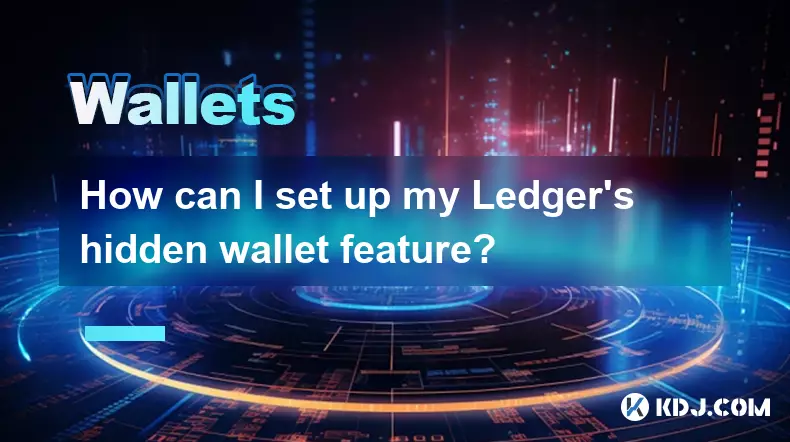
Understanding Ledger’s Hidden Wallet Feature
1. Ledger devices offer a feature known as the 'hidden wallet,' which operates through the use of multiple PIN codes. This functionality is built into Ledger’s security architecture and allows users to maintain plausible deniability in high-risk situations. By entering a specific alternate PIN, users can access a separate, concealed wallet that appears empty or contains minimal funds, while their primary assets remain protected under a different PIN.
2. The hidden wallet is not a distinct application or menu option within the Ledger Live interface. Instead, it is activated by deliberately choosing a secondary PIN during device setup or recovery. When this alternate PIN is entered, the device generates a completely different set of private keys based on the BIP39 and BIP44 standards, leading to a new wallet address space. This means no direct link exists between the visible wallet and the hidden one.
3. It is essential to understand that the hidden wallet does not store data separately on the device. Rather, it leverages cryptographic derivation paths tied to the seed phrase and the input PIN. As such, both wallets—visible and hidden—are derived from the same 24-word recovery phrase but follow different computational paths depending on the PIN used.
Setting Up the Hidden Wallet on Your Ledger
1. Begin by ensuring your Ledger device is reset. If it already contains data, back up any active accounts using the standard 24-word recovery phrase before proceeding. To enable the hidden wallet, you must go through the initial setup process and choose a custom PIN that will serve as the trigger for the alternate wallet.
2. During setup, when prompted to enter a PIN, input a unique sequence that you intend to use exclusively for accessing the hidden wallet. For example, if your normal PIN is “1234,” you might choose “4321” as your hidden wallet PIN. After entering this PIN twice, the device will generate a new wallet instance tied to that code.
3. Once the device confirms setup with the new PIN, open Ledger Live and restore the wallet using your original 24-word recovery phrase. At this point, Ledger Live will display the accounts associated with the hidden PIN's derivation path. You can now transfer a small amount of cryptocurrency to this wallet to make it appear legitimate if inspected.
4. Return to your main wallet by rebooting the device and entering your primary PIN. Restore the original accounts using the same 24-word phrase. This ensures your main holdings remain accessible only under the correct PIN combination. Never mix transactions between the two wallets to avoid accidental exposure.
Maintaining Security and Operational Discipline
1. The effectiveness of the hidden wallet relies heavily on user discipline. You must never reference the existence of the hidden wallet in digital communications or cloud-stored notes. Store information about the alternate PIN and its purpose offline, preferably written by hand and kept in a secure physical location.
2. Avoid using the hidden wallet for frequent transactions. Regular activity may draw attention due to unusual transaction patterns or timing, especially if monitored. Treat it strictly as an emergency fallback with limited funds to preserve credibility during potential coercion scenarios.
3. Be aware that entering the wrong PIN three times will result in the device wiping all data. This applies to both the main and hidden wallets. Since the system cannot distinguish between a forgotten PIN and a forced access attempt, always memorize both PINs or store them securely without digital traces.
4. Never disclose the relationship between your PINs. Using predictable variations like reversed numbers or incremental sequences increases the risk of discovery. Choose PINs that are unrelated and difficult to guess, even by someone who knows your personal habits.
Recovering Access to the Hidden Wallet
1. If you lose access to your hidden wallet, recovery depends entirely on your ability to recall the correct PIN and apply the original 24-word recovery phrase. There is no backup file or secondary authentication method provided by Ledger for this feature.
2. When attempting recovery, ensure your Ledger device is in the correct mode. Connect it to your computer, open Ledger Live, and select “Restore from recovery phrase.” Enter the 24 words in the correct order, then input the hidden wallet’s PIN when prompted.
3. The restored wallet will reflect the balance and transaction history tied to that specific PIN-path combination. If no funds appear, double-check the PIN entry and confirm that the correct derivation path was used during the initial setup.
Frequently Asked Questions
Can I create more than one hidden wallet on a single Ledger device?Yes, technically, you can set up multiple hidden wallets by using different PIN combinations during repeated resets. Each unique PIN generates a new wallet derivation. However, managing several PINs increases the risk of confusion or lockout, so most users limit themselves to one hidden wallet for practicality.
Does the hidden wallet work with all cryptocurrencies supported by Ledger?Yes, because the hidden wallet uses standard BIP44 derivation, it supports every cryptocurrency available on Ledger Live. Once restored under the alternate PIN, you can install apps and manage assets just like in the primary wallet, though doing so should be done sparingly.
Is there any visual indication that I’m using the hidden wallet?No, there is no on-device notification or interface change that signals you are in a hidden wallet. The experience is identical to the regular wallet. Users must remember which PIN they entered to know which wallet instance they are accessing.
Disclaimer:info@kdj.com
The information provided is not trading advice. kdj.com does not assume any responsibility for any investments made based on the information provided in this article. Cryptocurrencies are highly volatile and it is highly recommended that you invest with caution after thorough research!
If you believe that the content used on this website infringes your copyright, please contact us immediately (info@kdj.com) and we will delete it promptly.
- BlockDAG, DOGE, HYPE Sponsorship: Crypto Trends Shaping 2025
- 2025-10-01 00:25:13
- Deutsche Börse and Circle: A StableCoin Adoption Powerhouse in Europe
- 2025-10-01 00:25:13
- BlockDAG's Presale Buzz: Is It the Crypto to Watch in October 2025?
- 2025-10-01 00:30:13
- Bitcoin, Crypto, and IQ: When Genius Meets Digital Gold?
- 2025-10-01 00:30:13
- Stablecoins, American Innovation, and Wallet Tokens: The Next Frontier
- 2025-10-01 00:35:12
- NBU, Coins, and Crypto in Ukraine: A New Yorker's Take
- 2025-10-01 00:45:14
Related knowledge
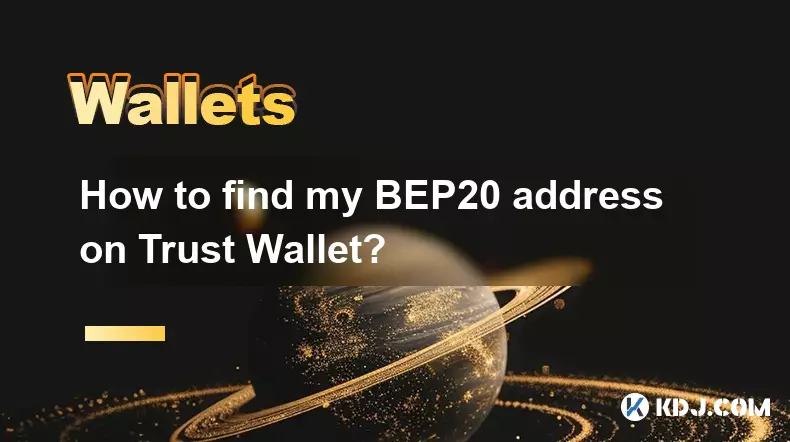
How to find my BEP20 address on Trust Wallet?
Oct 04,2025 at 06:19pm
Understanding BEP20 and Trust Wallet Compatibility1. Trust Wallet is a widely used cryptocurrency wallet that supports multiple blockchain networks, i...
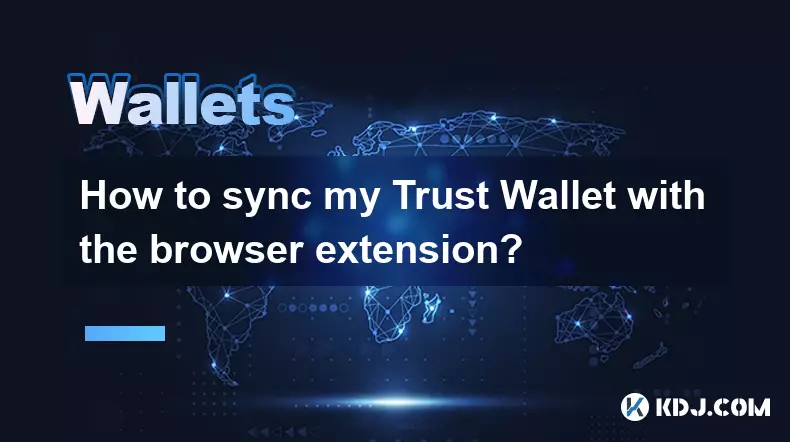
How to sync my Trust Wallet with the browser extension?
Oct 03,2025 at 06:19pm
Understanding Trust Wallet and Browser Extension IntegrationTrust Wallet is a popular non-custodial cryptocurrency wallet that supports a wide range o...
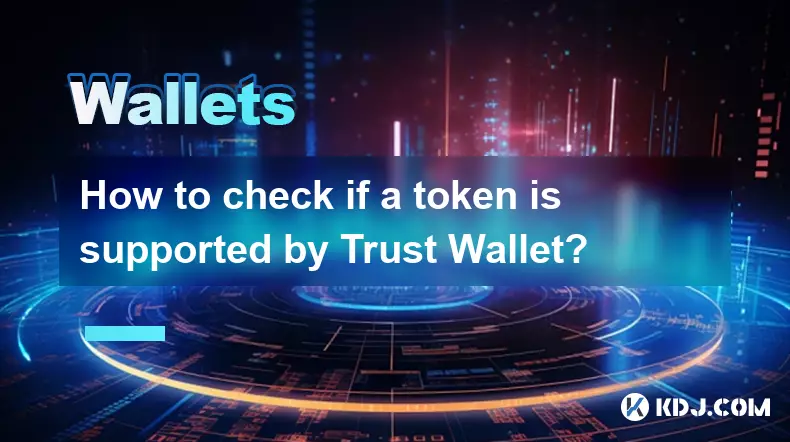
How to check if a token is supported by Trust Wallet?
Oct 04,2025 at 05:18am
Understanding Token Compatibility with Trust Wallet1. Trust Wallet supports a wide range of blockchain networks, including Ethereum, Binance Smart Cha...

How to get the Trust Wallet browser extension?
Oct 01,2025 at 12:37am
How to Access the Trust Wallet Browser Extension1. Visit the official Trust Wallet website through a secure internet connection. Navigate to the downl...

How to interact with a DApp using Trust Wallet?
Oct 02,2025 at 10:00pm
Connecting Trust Wallet to a DApp1. Open the Trust Wallet app on your mobile device and ensure your wallet is unlocked with access to your assets. Nav...
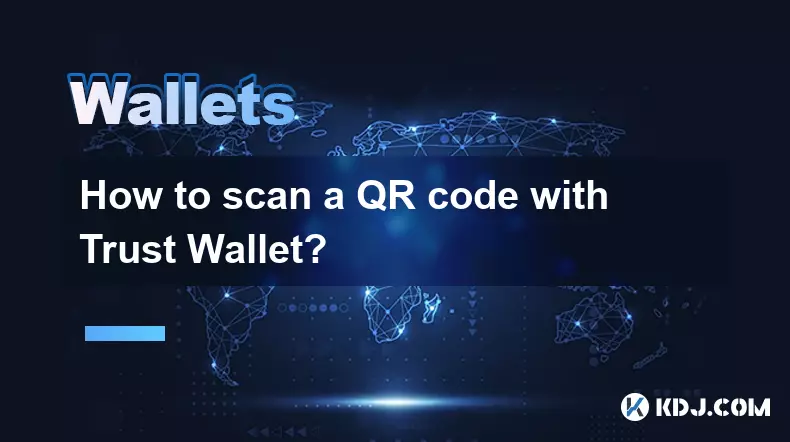
How to scan a QR code with Trust Wallet?
Oct 02,2025 at 03:37pm
Understanding QR Codes in Trust Wallet1. QR codes are widely used in cryptocurrency applications to simplify transaction processes. Trust Wallet lever...

How to find my BEP20 address on Trust Wallet?
Oct 04,2025 at 06:19pm
Understanding BEP20 and Trust Wallet Compatibility1. Trust Wallet is a widely used cryptocurrency wallet that supports multiple blockchain networks, i...

How to sync my Trust Wallet with the browser extension?
Oct 03,2025 at 06:19pm
Understanding Trust Wallet and Browser Extension IntegrationTrust Wallet is a popular non-custodial cryptocurrency wallet that supports a wide range o...

How to check if a token is supported by Trust Wallet?
Oct 04,2025 at 05:18am
Understanding Token Compatibility with Trust Wallet1. Trust Wallet supports a wide range of blockchain networks, including Ethereum, Binance Smart Cha...

How to get the Trust Wallet browser extension?
Oct 01,2025 at 12:37am
How to Access the Trust Wallet Browser Extension1. Visit the official Trust Wallet website through a secure internet connection. Navigate to the downl...

How to interact with a DApp using Trust Wallet?
Oct 02,2025 at 10:00pm
Connecting Trust Wallet to a DApp1. Open the Trust Wallet app on your mobile device and ensure your wallet is unlocked with access to your assets. Nav...

How to scan a QR code with Trust Wallet?
Oct 02,2025 at 03:37pm
Understanding QR Codes in Trust Wallet1. QR codes are widely used in cryptocurrency applications to simplify transaction processes. Trust Wallet lever...
See all articles










































































